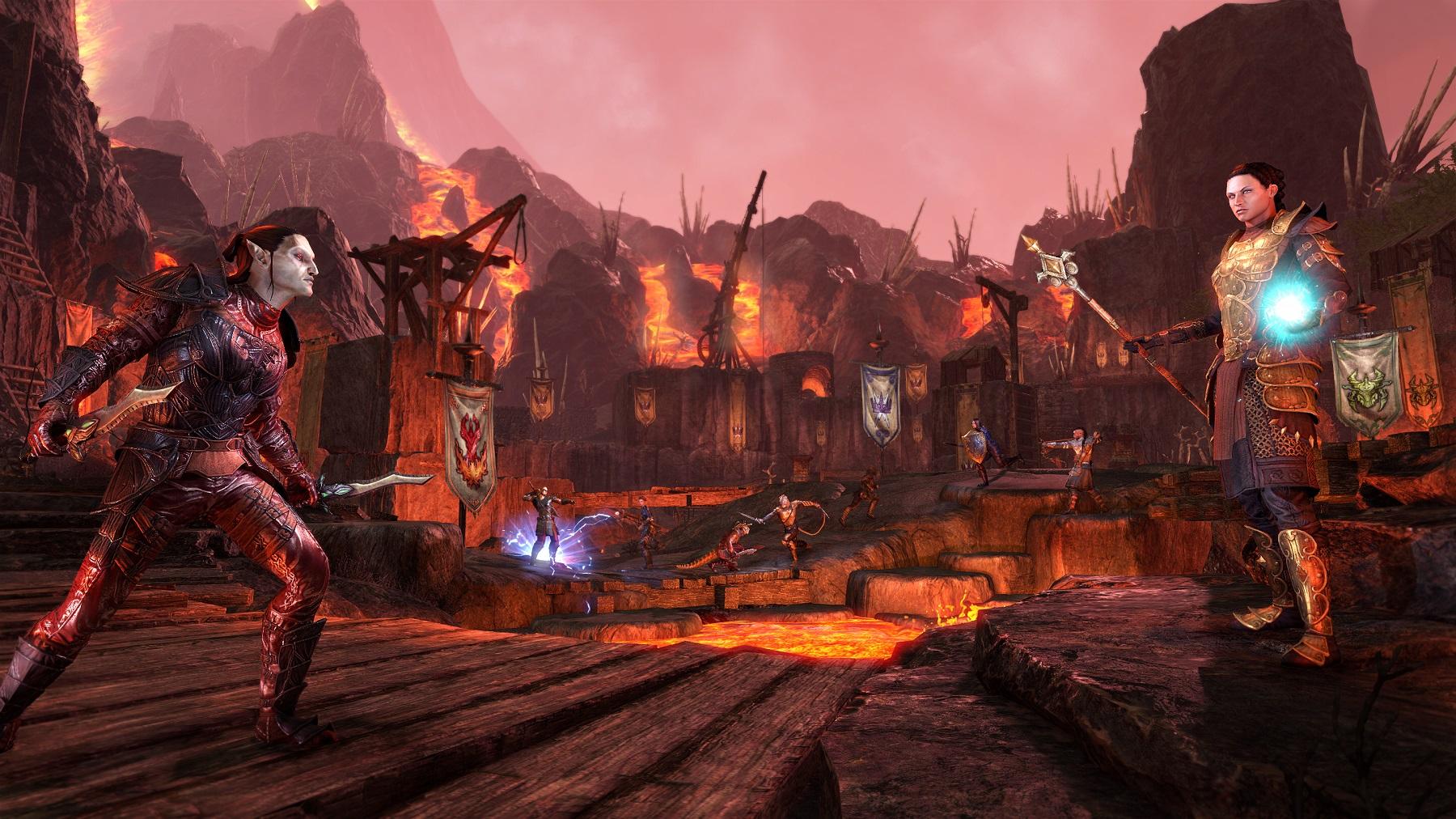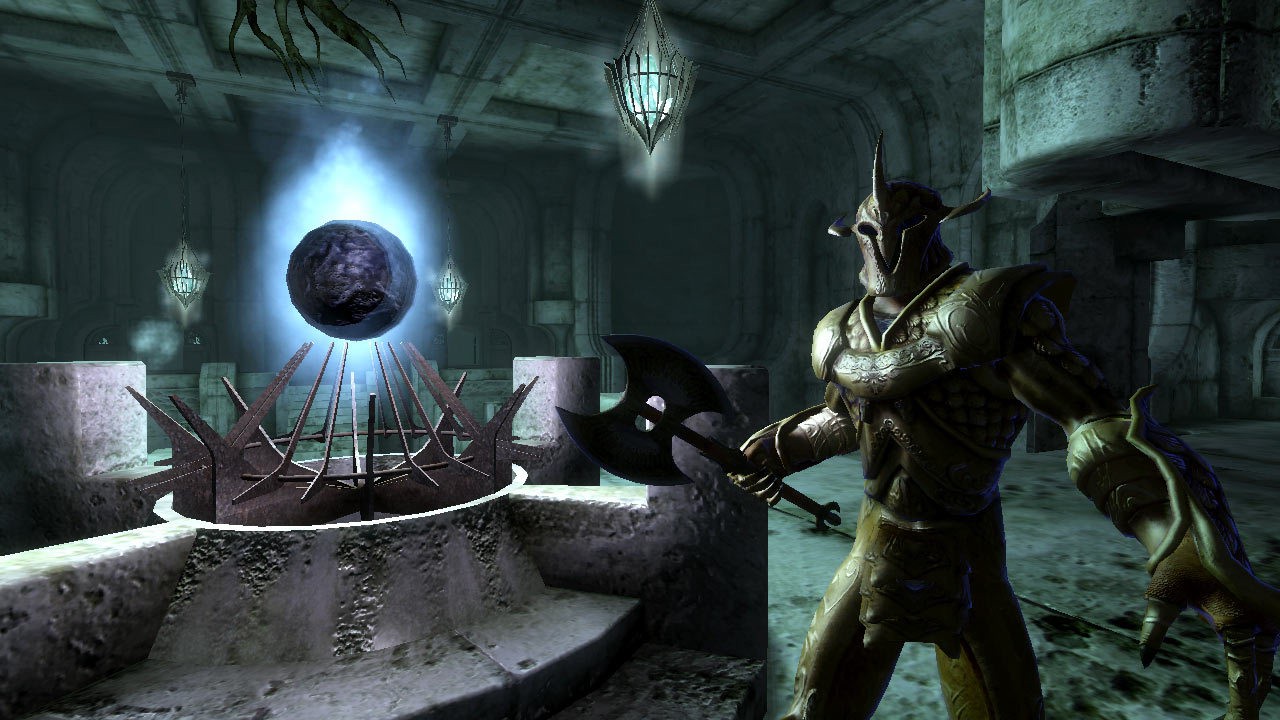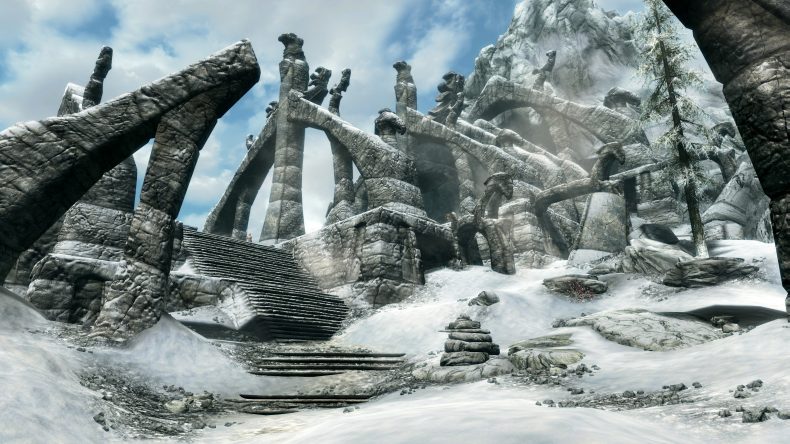Whether you were there from the beginning or your first experience of The Elder Scrolls was in the world of Online, it’s hard to deny its impact on the world of role playing games. The landscape of open world RPGs would be very different without Bethesda’s iconic series, with even titles like The Witcher 3 probably not existing in nearly the same way, if at all. You may scoff at that, but it’s hard to argue that Morrowind in particular changed the way we think about open worlds.
Personally, although Morrowind was my first experience with The Elder Scrolls back when it released on the original Xbox in 2002, I couldn’t quite get on with the way it fused real-time combat with a very stat-heavy, almost dice-rolling hit/miss system. Physically witnessing a weapon make contact with an enemy, only for it to miss because some unseen numbers said so was quite difficult for me to enjoy. However, the world itself and the way you could discover new quests and stories by physically exploring it was incredible. You could read a book about some ancient order, then trace its steps to actually discover sites that were still used by that order. There was no quest pop-up or marker to indicate where you should look, it was all done by the player. The sheer level of detail in that world was beyond anything else. Some would argue that it has yet to be bettered.

Fast forward to 2006, a few short months after I’d picked up the then new Xbox 360, and along came Bethesda with its follow-up to Morrowind, The Elder Scrolls IV: Oblivion. I have always been a fantasy nerd, and this game looked to be giving me exactly what I had been looking for, minus the heavily stat-based combat of its predecessor. I was so excited, I even bought the special edition, with the coin and everything.
Who could forget that tense opening section, escaping the dungeons with Emperor Uriel Septim, and being forced to fight assassins as you were suddenly thrust into this grand storyline. The emperor’s bloodline was being targeted and with it wiped out, the gateways to Oblivion would open and all of Tamriel would fall. People talk of memorable game intros, and I think Oblivion has to be up there with some of the most iconic ones. That moment when you’ve escaped through the sewers, exiting into the bright sunlight and the majestic sight of Cyrodiil…I knew right there that I was in for a real treat.
I know that revisiting Oblivion isn’t quite as amazing now, but its world is still vibrant and beautiful considering the technical limits it faced over a decade ago, and if you have even a half-decent PC the modding potential is huge. In fact, Oblivion was the very first game I ever modded, pushing even my Crysis-ready laptop to its limits at the time. As I was writing this, I even downloaded the game on my current PC, to see just how gorgeous I could get it to look now. Honestly, even without mods, it looked better than expected. It brought back fond memories of fighting through the opening area, only this time I had spells at my command as well as sword and shield, and tossing fireballs at rats is oddly hilarious, the ragdolls physics flopping them around wildly upon death.
And you know what? Leaving the sewer and seeing the lush green world outside, the Ayleid ruin across the water? Still impressive.

Now, let’s jump forward in time again, to perhaps the most significant release in the series: 2011’s The Elder Scrolls V: Skyrim. Not only a landmark for the series in terms of its overall quality, it sold over three million copies in its opening weekend and even managed to beat both Call of Duty and FIFA to the UK Christmas number one spot. The first game to have done so in many years. It was a rather exciting time for nerds like me, to see a fantasy RPG find such a huge, mainstream audience.
Much like its predecessor, Skyrim had another memorable introduction. Eschewing the more clandestine beginnings of Oblivion, Skyrim had you escaping a death sentence (forgetting for a moment that the character creator basically involved you morphing into several different species, in front of a mentally-scarred-for-life guard) and let’s not forget the giant dragon that was tearing apart a small fort, its fiery breath burning people to ash. Not content with that, you were even confronted by a giant spider before you finally completed your escape, emerging from a cave system into the snow covered hills of Skyrim.
Of course, Bethesda’s new phenomenon is remembered for far more than its opening moments. We can’t forget that its console launch was…rocky, shall we say? The PS3 version was rife with issues, but thankfully I went for the Xbox 360 version, and so found my experience to be largely without problems. I even threw money at the big Collector’s Edition, and Alduin still rests above me as I type this, probably judging me for spending so much. I regret nothing, Alduin. Don’t you judge me.
Speaking of the World Eater, Alduin was the first of many dragons to appear in the game. Who can forget going off to battle that first dragon, just outside Whiterun? For me, it was circling the tower as I attempted to fill its hide with a quiver-full of arrows, before finally having to fight it with sword and shield on the ground. Although it was limited in its animations and the actual scrap was filled with my wild sword’s flailing and desperate attempts to avoid its attacks, that doesn’t stop me remembering an epic struggle that only the likes of Dragon’s Dogma and The Witcher 3 have managed to match since.
Skyrim is regarded by many to be the best in the series, and for many years it has been considered one of the best games of all time. This is largely down to its stunning world and a return to that detailed and rewarding freedom of exploration for which Morrowind was so famous. I still fondly remember my exploits in finding the Wolf Queen and tracking down the masks of the Dragon Priests. I sunk so many hours into Skyrim’s initial release, that I was still playing it regularly when its first DLC, Dawnguard, released around nine months later. I was even playing it regularly another six months after that, when the third DLC released, which took players back to Morrowind for the final addition to the Skyrim story, Dragonborn. It’s rare that I play a specific game for such a long period of time, because I’m easily distracted and play so many games over the course of any given year, so that should tell you just how much I adored Skyrim.

It didn’t stop there, either. On top of that big ol’ statue edition on Xbox 360, I eventually bought the PC version in a Steam sale, with plans to get back into the modding scene. I even ended up buying the remastered Skyrim: Special Edition on Xbox One in 2016 and still wasn’t done with this modern classic, finally adding the PC version of the remaster to my Steam Collection. I stopped short of buying the Switch version (thankfully I don’t own any VR headsets, otherwise I reckon Skyrim VR would have been a nailed-on purchase), though I would still like to try it out, see how the motion controls work. Especially as I discussed with a friend the idea of PlayStation Move support, back when the PS3 version was released.
Clearly, I have a problem.
The Elder Scrolls series has yet to see the release of its sixth numbered outing and, despite its long awaited (but obviously token) reveal at E3 2018, will be waiting a good few years before that happens. Instead, Bethesda attempted to muscle in on the Warcraft-dominated world of MMORPGs, releasing The Elder Scrolls Online (TESO) on PC in 2014, with a console version appearing a year later. While never troubling Blizzard’s online colossus, TESO did manage to bring the world of Tamriel to life in a familiar way, while integrating a more MMO-friendly combat system. It’s not quite the online game that many wanted, but it still feels very much like an Elder Scrolls game.
I have a few fond memories of my introduction to this MMORPG, when it removed the subscription and launched on console (my PC at the time would’ve melted at the thought of running TESO). I’m not the most social gamer, but the way most interactions could revolve around emotes, coupled with a game that could generally be played solo, saw me getting very into the game at the start.
There were plenty of people around, so when I found myself struggling with a boss, my health dropping at an alarming rate, it was a relief when someone jumped in to aid me. Now, I’m not saying they did it to be a good Samaritan, they were obviously doing the same quest and had to fight the same boss, but it was a cool moment for me nonetheless. Another fun moment, if a little bizarre, was in a starting zone at a broken bridge on the coast. It may have been a pier. Apologies, I forget where exactly it was, as it was years ago now. I tried to make the jump and fell into the water, which prompted another nearby player to attempt the same jump, then another and another. This lasted for around thirty minutes or more, as we each tried and failed to make the jump, cheering each attempt with emotes like a weird sporting event. It’s funny, the strange little moments that entertain us, that stick with us, but that’s the beauty of games.
That memory sticks with me because I’m not the most social gamer, as I’ve said, and yet some of the nicest memories from The Elder Scrolls Online have come from my interactions with other players, without the need to use my microphone. Don’t get me wrong, I have no issue with speaking to these random strangers, but I often play Elder Scrolls games to simply enjoy exploring alone. It may be a cliche, but escapism really is a huge part of these games, for me. Their worlds are huge and varied, and you can explore them however you wish, and that freedom is rarely provided elsewhere. Many players simply want to rush through quests to get the XP, whereas I like to take my time in exploring and talking to NPCs, perhaps read a book or two if I find them (that’s precisely what led to my Wolf Queen experience in Skyrim), which is why I tend to remain on my own. I like helping others if I see them fighting, or I’m grateful when others come in to help me in a time of need, and I know that if I ever do feel like grouping up, the option is available. And that’s excellent.

I’ve recently gone back to TESO after a long absence, and it has me wondering why I ever stopped playing it. The “One Tamriel” feature that was introduced a little while back was a stroke of genius, scaling the game to the level of each player and allowing anyone to explore in the same way they would any other Elder Scrolls game. It’s bloody gorgeous on Xbox One X, too. I was still in Morrowind when I first loaded up the game again, so I explored a while there and did a few quests, before deciding to pick up Summerset while it was on offer. Now that is one lovely-looking area in 4K, with its bright, vivid colours coming to life with HDR switched on. I plan on spending a lot of time on the isle of the Altmer, before heading to Elsweyr in June.
Rather than releasing a new core game in the series, TESO allowed Bethesda to release new chapters that let players visit their favourite locations in a slightly different way. Elsweyr will be the latest of those locations to visit, allowing new and existing players to see the homeland of the Khajiit, as well as see the return of dragons to Tamriel. As you might expect, 2017’s Morrowind expansion was particularly popular, bringing back the fan-favourite location, and also delving into a history that had previously only been available via texts in the original game.
While many would prefer to play The Elder Scrolls VI, officially (finally) unveiled via a brief CG teaser at Bethesda’s E3 show last year, I am happy to keep playing TESO for a while yet. I’m also happy to return to Skyrim and Oblivion, and possibly even Morrowind with a few mods, to help me get past that combat system and finally enjoy the beloved classic. There aren’t many open world RPGs that have come close to matching my enjoyment of The Elder Scrolls series, and I suspect the same goes for millions of other players, which is why it is still hugely popular after twenty five years.
But let’s hope we’re not still waiting for The Elder Scrolls VI by the time the series turns thirty…






